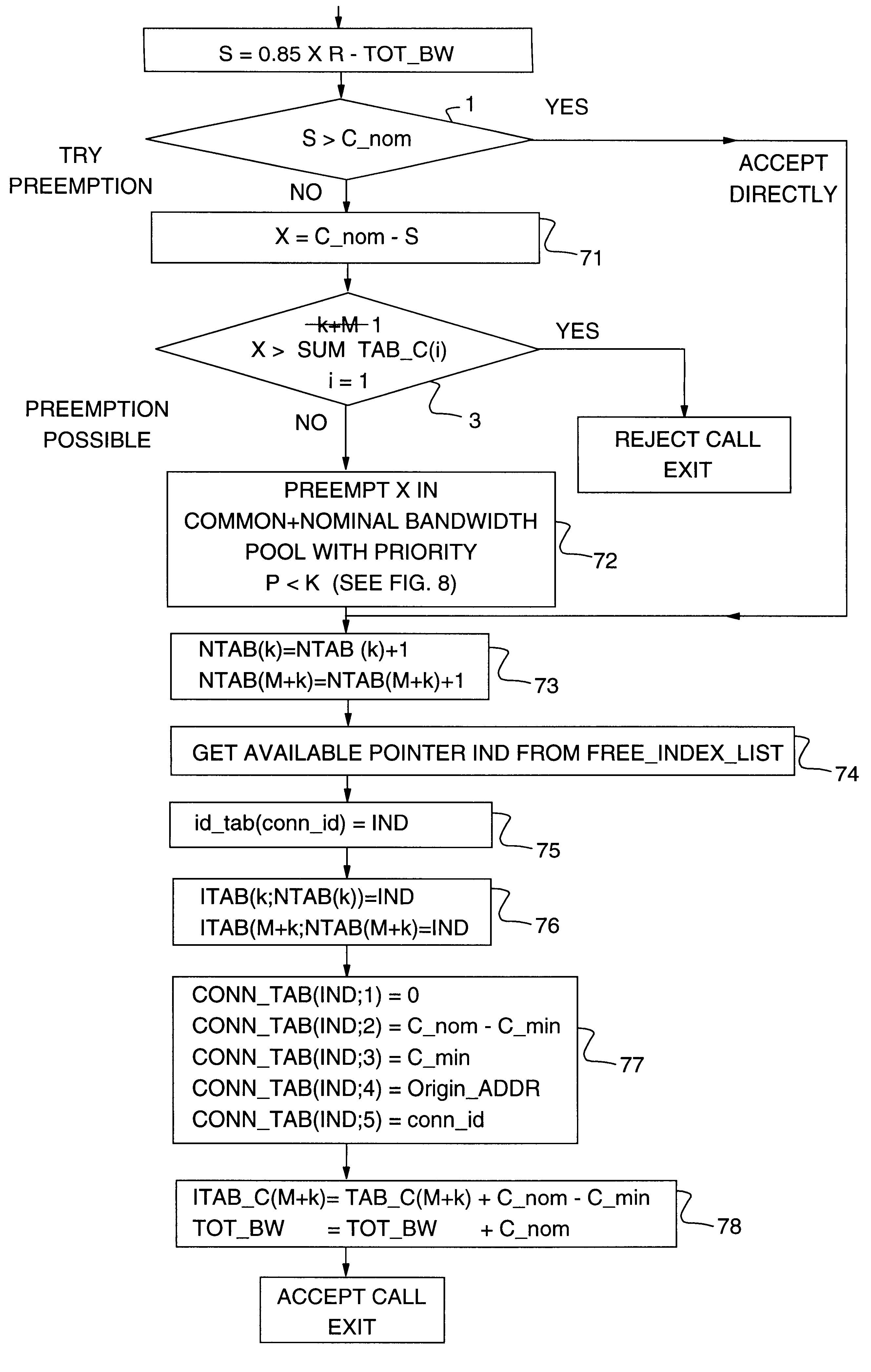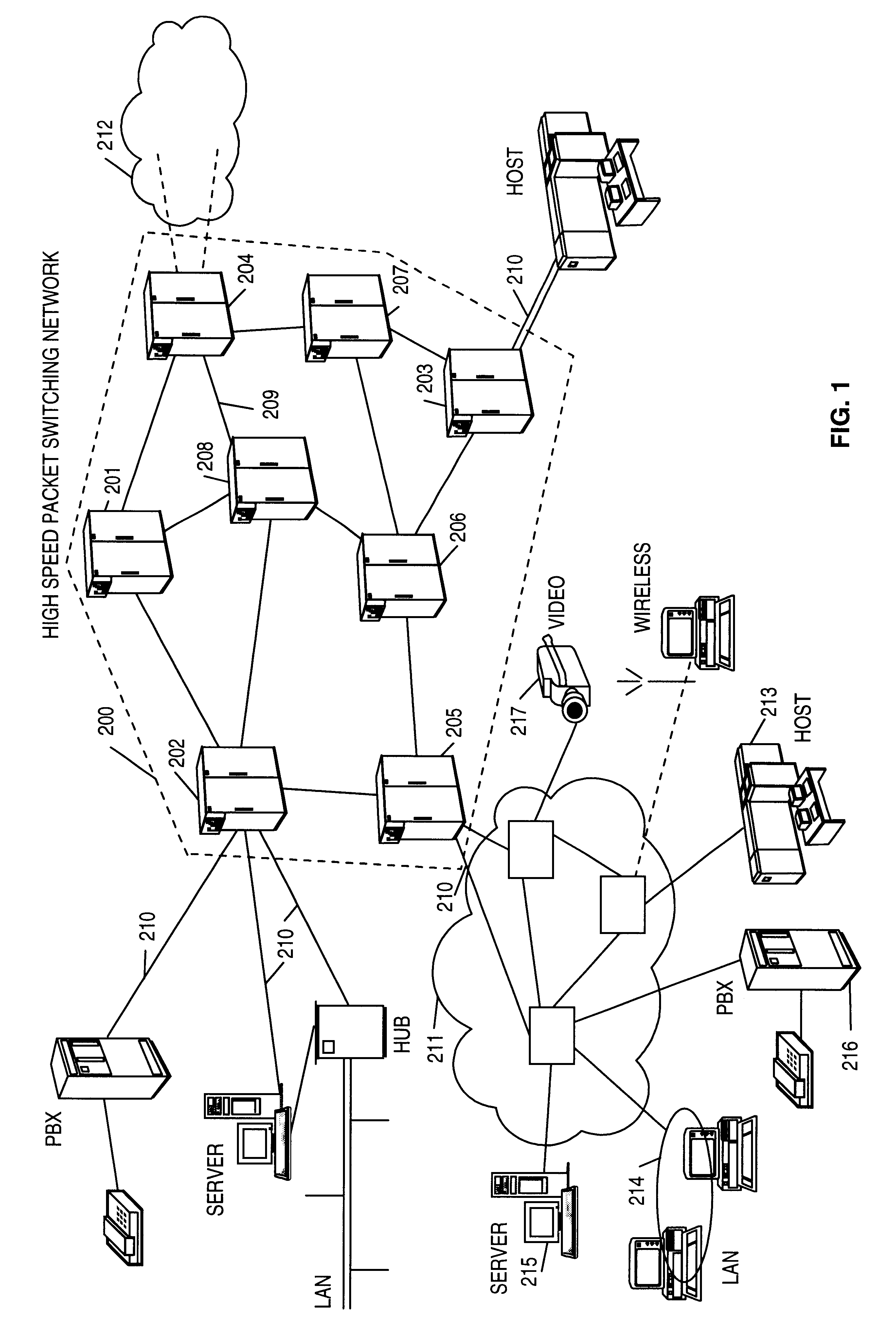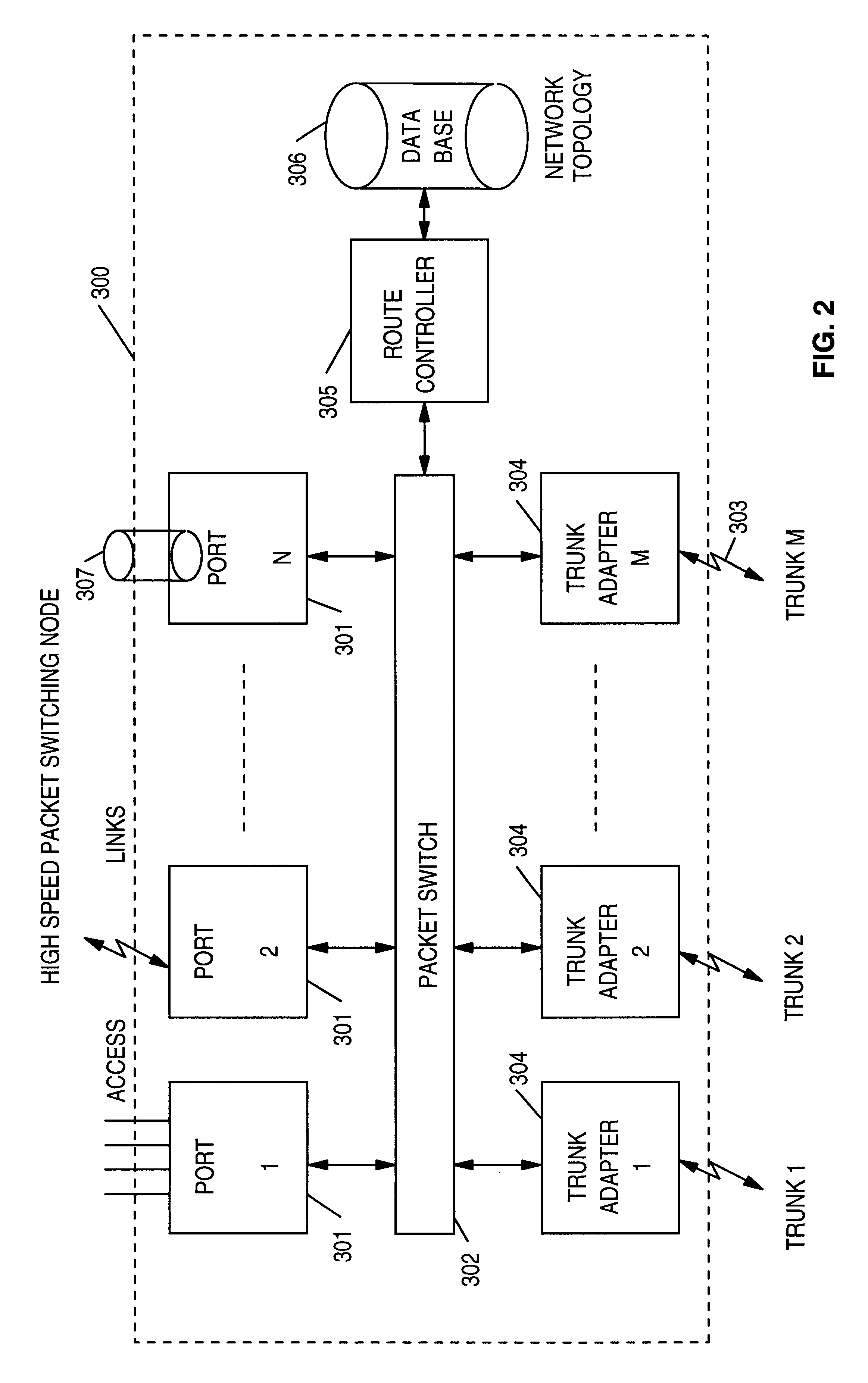Method and system for non disruptively assigning link bandwidth to a user in a high speed digital network
a high-speed digital network and link bandwidth technology, applied in data switching networks, frequency-division multiplexes, instruments, etc., can solve the problems of increasing link speeds that cannot be matched, communication networks have limited resources at their disposal to ensure efficient packet transmission, and packet processing time. to achieve the effect of avoiding network collaps
- Summary
- Abstract
- Description
- Claims
- Application Information
AI Technical Summary
Benefits of technology
Problems solved by technology
Method used
Image
Examples
Embodiment Construction
As illustrated in FIG. 1 a typical model of communication system is made of several user networks (212) communicating through a high performance network (200) using private lines, carrier provided services, or public data networks. Each user network can be described as a set of communication processors and links (211) interconnecting large computers used as Enterprise Servers (213), user groups using workstations or personnel computers attached on LAN (Local Area Networks 214), applications servers (215), PBX (Private Branch eXchange 216) or video servers (217). These user networks, dispersed in different establishments, need to be interconnected through wide area transport facilities.
Different approaches can be used for organizing the data transfer. Some architectures involve the checking for data integrity at each network node, thus slowing down the transmission. Others are essentially looking for a high speed data transfer. To that end the transmission, routing and switching tech...
PUM
 Login to View More
Login to View More Abstract
Description
Claims
Application Information
 Login to View More
Login to View More - R&D
- Intellectual Property
- Life Sciences
- Materials
- Tech Scout
- Unparalleled Data Quality
- Higher Quality Content
- 60% Fewer Hallucinations
Browse by: Latest US Patents, China's latest patents, Technical Efficacy Thesaurus, Application Domain, Technology Topic, Popular Technical Reports.
© 2025 PatSnap. All rights reserved.Legal|Privacy policy|Modern Slavery Act Transparency Statement|Sitemap|About US| Contact US: help@patsnap.com



